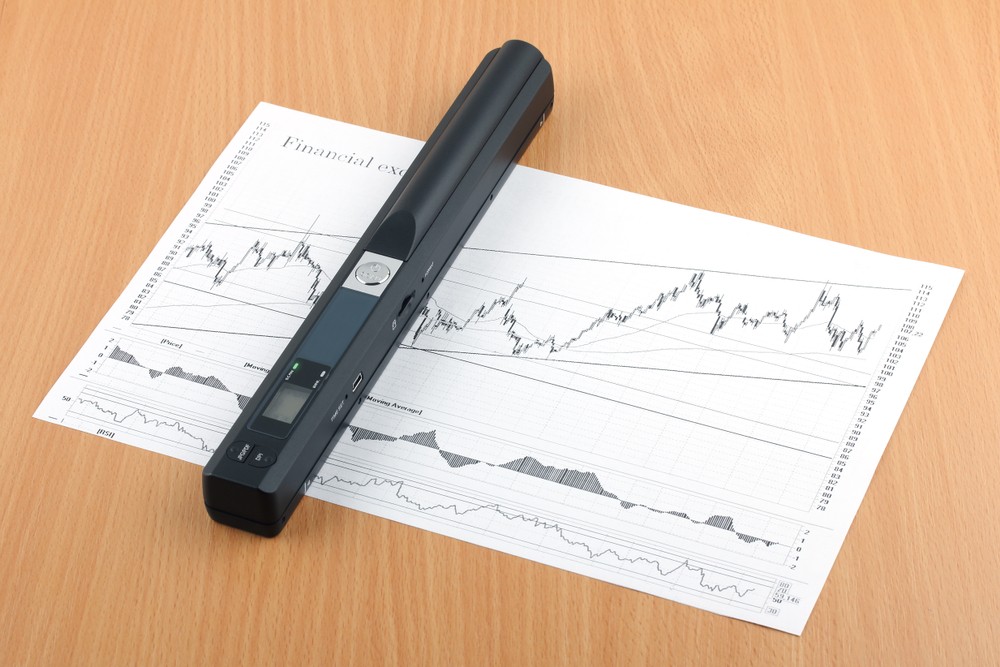The pursuit of a paperless lifestyle continues to gain traction as technology advances. One of the key tools facilitating this transition is the portable document scanner, a device that allows you to convert physical documents into digital formats effortlessly. Whether you’re a student, a business professional, or someone trying to manage household documents, a portable document scanner can significantly enhance your workflow and organization while saving money.
Portable Document Scanners
Portable document scanners are compact devices designed to scan documents and photographs with ease. Unlike traditional flatbed scanners, they are small, lightweight, and remarkably easy to transport. These devices offer a practical solution for digitizing records such as receipts, business cards, brochures, and even drawings, making it simple to store, organize, and share documents electronically.
Benefits of Portable Document Scanners
The primary appeal of portable document scanners lies in their convenience and efficiency. Here are a few reasons why opting for one might be a wise choice:
- Space-Saving: These scanners take up minimal space both in storage and during use. Their compact size makes them ideal for small home offices and students with limited desk space.
- Mobility: A portable scanner can be easily carried to meetings, libraries, and client visits. Many are powered via USB or similar connections, eliminating the need for external power sources.
- Cost-Effective: Without needing a lot of peripherals and infrastructure, these scanners can be less expensive than their desktop counterparts. Their affordability makes them accessible for budget-conscious users.
- Time-Saving: With swift scanning capabilities, you can quickly manage and organize numerous documents, reducing the time spent sifting through paper accumulations.
Features to Consider
When considering a portable document scanner, evaluating different features is paramount to ensuring you select the right model for your needs.
- Resolution: Measured in dots per inch (DPI), scanner resolution impacts the clarity and detail of the scanned image. A higher DPI is beneficial for graphics and detailed documents, while lower DPI might suffice for basic text documents.
- Scan Speed: Reflecting the number of pages a scanner can process per minute, scan speed is an important factor if you’re dealing with larger volumes of documents.
- Connectivity: Look for models that offer wireless connectivity options like Wi-Fi or Bluetooth, which enable easy connections to mobile devices and cloud storage services. USB connectivity is also a standard feature.
- Software and Compatibility: Comprehensive software can make a significant difference in managing scanned files. Ensure the scanner comes with intuitive software that lets you edit, organize, and store documents efficiently. Compatibility with your operating system—whether Windows, macOS, or Linux—is equally vital.
- File Formats: Scanners that offer a variety of file format outputs, such as PDF, JPEG, TIFF, and more, allow you to maintain flexibility in how you use your digital documents.
- Duplex Scanning: If you frequently handle double-sided documents, this feature is crucial as it allows scanning both sides of a page in one pass.
Top Portable Scanner Options
Numerous brands and models are available on the market, each with unique qualities. Here are three portable scanners that consistently receive positive reviews:
- Fujitsu ScanSnap iX100: This model stands out for its high-speed scanning and wireless connectivity. Compact, lightweight, and easy to use, it’s excellent for quick on-the-go scanning.
- Epson WorkForce ES-60W: Known for its affordability, the Epson WorkForce ES-60W integrates wireless capabilities and superior portability, making it a great choice for budget-savvy users.
- Brother DS-740D: This scanner is notable for its duplex capabilities and high image quality. It’s adept at handling different types of documents, including receipts and photos.
How to Use a Portable Document Scanner Effectively
To get the most out of your portable document scanner, here are some practical tips:
- Eliminate Clutter: Start by scanning documents that frequently clutter your space, such as utility bills, receipts, and business cards. Store them digitally and consider shredding the physical copies if they are no longer needed.
- Consistent File Naming: Develop a system for naming your scanned files so that they remain organized and easily retrievable. Incorporating dates or categories in file names can optimize searchability.
- Regular Backups: Always back up your scanned documents to a secure location like an external hard drive or cloud storage service to prevent data loss.
- Adjust Settings Appropriately: Tailor the settings to the type of document you are scanning. Use higher DPI settings for images and lower ones for text documents to optimize storage space without compromising quality.
The Cost vs. Benefits Analysis
Purchasing a portable document scanner is an investment. While the initial costs can vary—ranging from as low as $60 to several hundred dollars based on features—the long-term advantages often outweigh the expenditure. Consider the cumulative savings on physical storage materials, the efficiency of digital documentation, and the environmental benefits of reducing paper usage.
Owning a scanner eliminates the recurring costs associated with outsourcing scanning tasks or paying for storage space for physical documents. The convenience of on-demand scanning means tasks can be completed promptly, cutting down on time spent searching for services and waiting for task completion. Through these efficiencies and savings, a portable scanner can pay for itself over time.
Environmental Impact
Going digital not only benefits individual efficiency but also supports a sustainable lifestyle. By reducing paper consumption, we decrease the demand for paper products, which can have a significant ecological footprint due to tree farming, water usage, and pollution from manufacturing. Portable document scanners contribute to this effort by enabling us to embrace digital solutions that align with environmentally conscious living.
Digital document storage reduces the need for physical filing equipment and supplies, further minimizing consumption of resources. This is a thoughtful aspect to consider, not just from a practical standpoint, but as a part of an effort towards global ecological responsibility.
The choice to use a portable document scanner can facilitate a smoother transition into digital documentation, provide tangible savings, and contribute to a sustainable future. By considering the operational benefits and long-term cost savings, consumers can make informed decisions that align with both personal and environmental goals. With a wide selection of capable models available on the market, finding the right scanner to meet individual needs is more accessible than ever.



